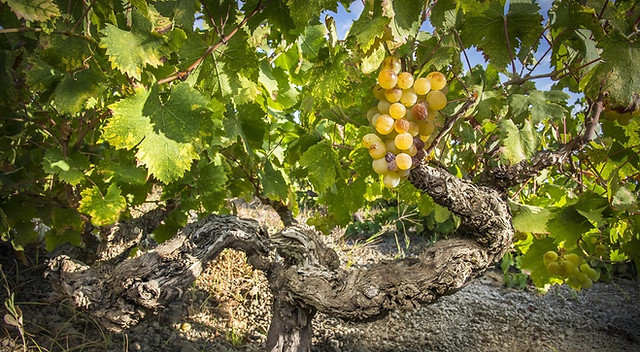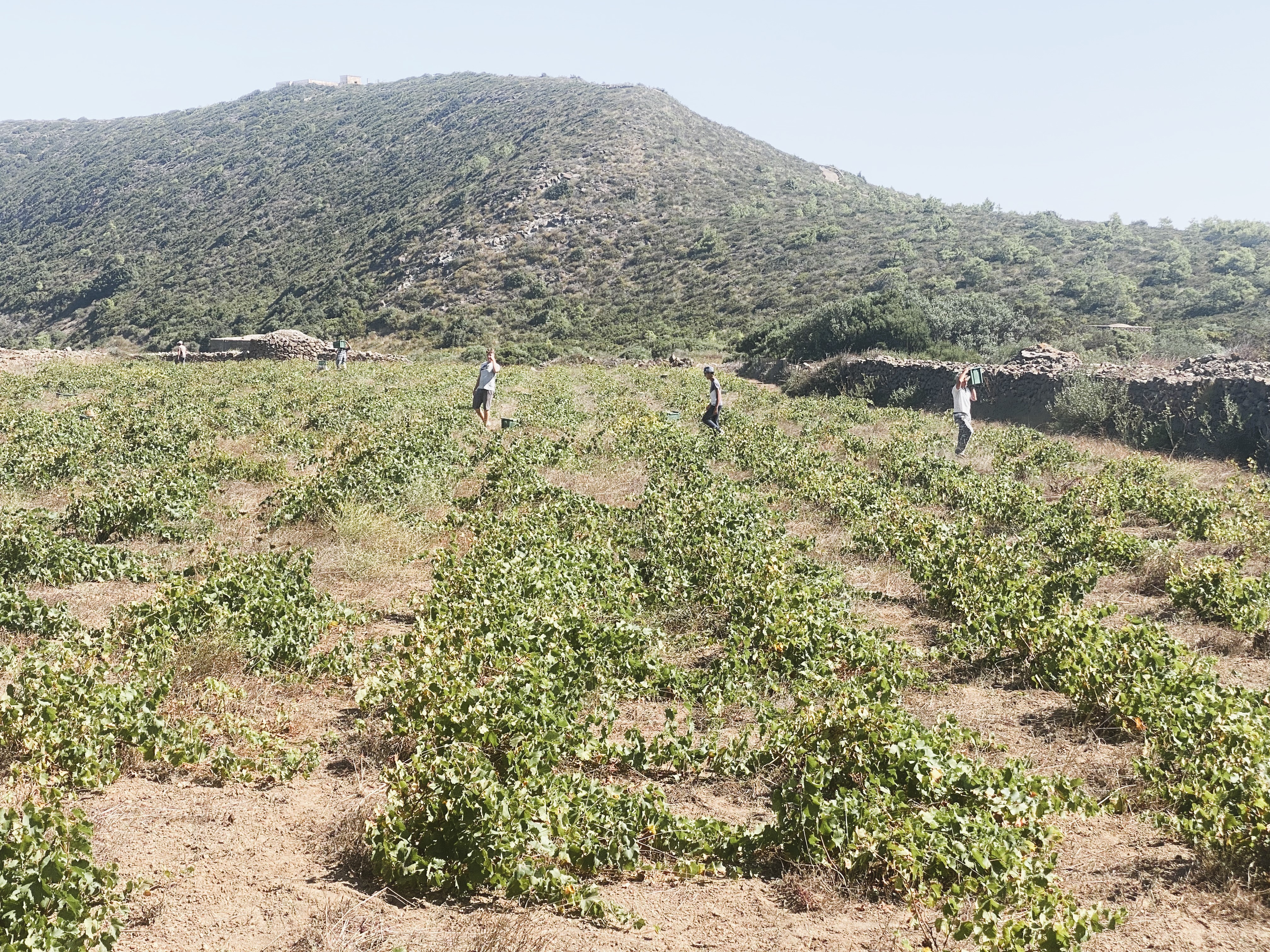
PANTELLERIA

PANTELLERIA
Pantelleria custodisce gelosamente un ricco patrimonio storico millenario, segno indelebile del passaggio dei popoli e delle culture che ne hanno plasmato l’identità nel corso del tempo. I Sesioti, arrivati da Sud, furono i primi ad abitare l’isola già tra il 4500 e il 3500 a.C. Seguirono poi Greci, Fenici, Romani, Bizantini Normanni, Svevi, Aragonesi e Borboni: un caleidoscopio di influenze che armoniose, hanno forgiato l’anima dell’isola. Se gli arabi che abitarono l’isola per oltre quattro secoli, le donarono il suo nome, “Bent-el-Rion”, figlia del vento, mentre i mosaici che adornano gli antichi dammusi, testimoniano il passaggio dei Bizantini, è all’ingegnosità dei fenici, che si deve la coltivazione della vite ad alberello.
Pantelleria jealously guards a rich millennial historical heritage, an indelible mark of the passage of peoples and cultures that have shaped its identity over time. The Sesioti, arriving from the south, were the first to inhabit the island between 4500 and 3500 B.C. They were followed by Greeks, Phoenicians, Romans, Byzantines, Normans, Swabians, Aragonese, and Bourbons: a kaleidoscope of influences that have harmoniously forged the soul of the island. While the Arabs, who lived on the island for over four centuries, gave it its name, "Bent-el-Rion," daughter of the wind, the mosaics adorning the ancient dammusi bear witness to the Byzantine presence. It is to the ingenuity of the Phoenicians that we owe the cultivation of the alberello vine.
Riconosciuto dall'UNESCO come patrimonio immateriale dell'umanità, l’antico alberello, si distingue per il suo aspetto singolare e la sua incredibile tenacia nel contrastare le avversità. Il suo basso fusto, custodito infatti da una conca di terreno che lo accoglie e lo protegge, permette alla pianta di conservare l'umidità preziosa durante i lunghi periodi di siccità. La pianta presenta branche vigorose con speroni cortissimi, ciascuno dei quali ospita al massimo due gemme. Simbolo della caparbietà e dell’ingegno degli abitanti dell’isola, l’alberello produce lo Zibibbo, un vino aromatico, dal colore dorato intenso e dal gusto complesso, come l’essenza di questa terra selvaggia e incantevole.
Recognized by UNESCO as an intangible cultural heritage, the ancient alberello vine is distinguished by its unique appearance and incredible resilience in facing adversity. Its low trunk, sheltered by a hollow in the ground that cradles and protects it, allows the plant to conserve precious moisture during long periods of drought. The plant features vigorous branches with very short spurs, each hosting a maximum of two buds. A symbol of the stubbornness and ingenuity of the island's inhabitants, the alberello produces Zibibbo, an aromatic wine with an intense golden color and a complex flavor, mirroring the essence of this wild and enchanting land.
Pantelleria custodisce gelosamente un ricco patrimonio storico millenario, segno indelebile del passaggio dei popoli e delle culture che ne hanno plasmato l’identità nel corso del tempo. I Sesioti, arrivati da Sud, furono i primi ad abitare l’isola già tra il 4500 e il 3500 a.C. Seguirono poi Greci, Fenici, Romani, Bizantini Normanni, Svevi, Aragonesi e Borboni: un caleidoscopio di influenze che armoniose, hanno forgiato l’anima dell’isola. Se gli arabi che abitarono l’isola per oltre quattro secoli, le donarono il suo nome, “Bent-el-Rion”, figlia del vento, mentre i mosaici che adornano gli antichi dammusi, testimoniano il passaggio dei Bizantini, è all’ingegnosità dei fenici, che si deve la coltivazione della vite ad alberello.
Pantelleria jealously guards a rich millennial historical heritage, an indelible mark of the passage of peoples and cultures that have shaped its identity over time. The Sesioti, arriving from the south, were the first to inhabit the island between 4500 and 3500 B.C. They were followed by Greeks, Phoenicians, Romans, Byzantines, Normans, Swabians, Aragonese, and Bourbons: a kaleidoscope of influences that have harmoniously forged the soul of the island. While the Arabs, who lived on the island for over four centuries, gave it its name, "Bent-el-Rion," daughter of the wind, the mosaics adorning the ancient dammusi bear witness to the Byzantine presence. It is to the ingenuity of the Phoenicians that we owe the cultivation of the alberello vine.

Riconosciuto dall'UNESCO come patrimonio immateriale dell'umanità, l’antico alberello, si distingue per il suo aspetto singolare e la sua incredibile tenacia nel contrastare le avversità. Il suo basso fusto, custodito infatti da una conca di terreno che lo accoglie e lo protegge, permette alla pianta di conservare l'umidità preziosa durante i lunghi periodi di siccità. La pianta presenta branche vigorose con speroni cortissimi, ciascuno dei quali ospita al massimo due gemme. Simbolo della caparbietà e dell’ingegno degli abitanti dell’isola, l’alberello produce lo Zibibbo, un vino aromatico, dal colore dorato intenso e dal gusto complesso, come l’essenza di questa terra selvaggia e incantevole.
Recognized by UNESCO as an intangible cultural heritage, the ancient alberello vine is distinguished by its unique appearance and incredible resilience in facing adversity. Its low trunk, sheltered by a hollow in the ground that cradles and protects it, allows the plant to conserve precious moisture during long periods of drought. The plant features vigorous branches with very short spurs, each hosting a maximum of two buds. A symbol of the stubbornness and ingenuity of the island's inhabitants, the alberello produces Zibibbo, an aromatic wine with an intense golden color and a complex flavor, mirroring the essence of this wild and enchanting land.






Abbazia San Giorgio S.r.l. P.IVA 02383560816 Via Roma, 23 Pantelleria (TP)
Abbazia San Giorgio S.r.l. V.A.T. 02383560816 Via Roma, 23 Pantelleria (TP)